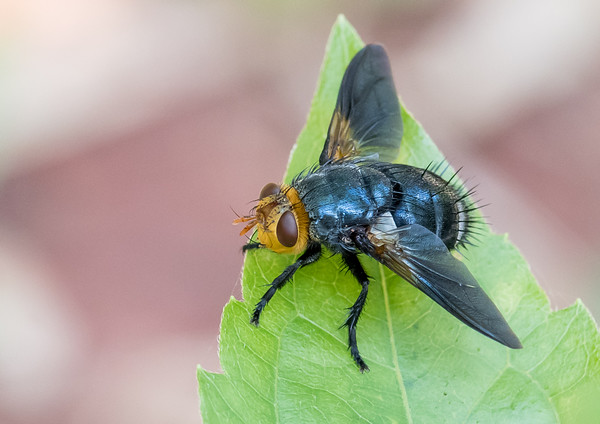|
Vietnamese Tachinidae
|
|
| DJHiker |
Posted on 18-01-2024 02:08
|
|
Member Location: Posts: 423 Joined: 24.10.13 |
Tachnidae observed in the north of Vietnam in Mai Chau area, approx. alt. 150m 31 October 2023. Looks a bit like the blue version of Tachina grossa. Any suggestions? Thanks in advance, David  |
|
|
|
| Zeegers |
Posted on 18-01-2024 11:47
|
|
Member Location: Posts: 18446 Joined: 21.07.04 |
It is a Mikia (related to Tachina) Theo |
|
|
|
| DJHiker |
Posted on 19-01-2024 12:57
|
|
Member Location: Posts: 423 Joined: 24.10.13 |
Thanks Theo. Cheers, David |
|
|
|
| John Carr |
Posted on 23-01-2024 17:56
|
|
Member Location: Posts: 9773 Joined: 22.10.10 |
Mikia lampros? |
|
|
|
| Zeegers |
Posted on 23-01-2024 22:13
|
|
Member Location: Posts: 18446 Joined: 21.07.04 |
It is not M. tepens and I don’t have a key …. Theo |
|
|
|
| John Carr |
Posted on 23-01-2024 22:44
|
|
Member Location: Posts: 9773 Joined: 22.10.10 |
Van der Wulp (1896) distinguished the species: Door den goudgelen kop en de bruine, aan de basis gele vleugels gelijkt deze soort op het eerste gezicht zoo zeer op E. tepens, dat ik aanvankelijk meende haar voor eene lokale varieteit van deze laatste te kunnen houden. Zij onderscheidt zich evenwel door de glanzig zwarte kleur van het geheele lichaam, ook op het schildje en aan de borstzijden (die bij tepens steeds roestkleurig zijn); door de witte vleugelschubben (deze zijn bij tepens levendig geel); en vooral door het derde sprietenlid, dat bijna even lang is als het tweede. |
|
|
|
| Zeegers |
Posted on 24-01-2024 07:54
|
|
Member Location: Posts: 18446 Joined: 21.07.04 |
Van der Wulp keeps surprising me ! Theo |
|
|
|
| John Carr |
Posted on 24-01-2024 11:26
|
|
Member Location: Posts: 9773 Joined: 22.10.10 |
The key in Flies of China should include all Vietnamese species of Mikia s. lat. It begins roughly 1a. 2-3 lateral scutellars, 3-4 dorsocentrals (some reduced), acrostichals irregular, male with 1-3 orbitals, hind tibia usually with three dorsal bristles ... 2 1b. Lateral scutellar absent, dorsocentrals 3+3, acrostichals 3+3; cheeks with black bristles, male without orbitals, hind tibia with 2 dorsal bristles ... remaining species 2a. Humeri, scutellum, and tergite 5 red or yellow, tergite 3 with 4-6 median marginals, first flagellomere shorter than pedicel, male with 2-3 orbitals ... M. tepens 2b. Humeri and scutellum black, tergite 5 black or black and red, first flagellomere about equal to pedicel, male with 1 orbital ... M. lampros It is not stated if the antenna character applies to both sexes. I just noticed the inner vertical bristles are not convergent, unusual in tribe Tachinini. |
|
|
|
| Jump to Forum: |














 but don't see the image in the post.
but don't see the image in the post.
